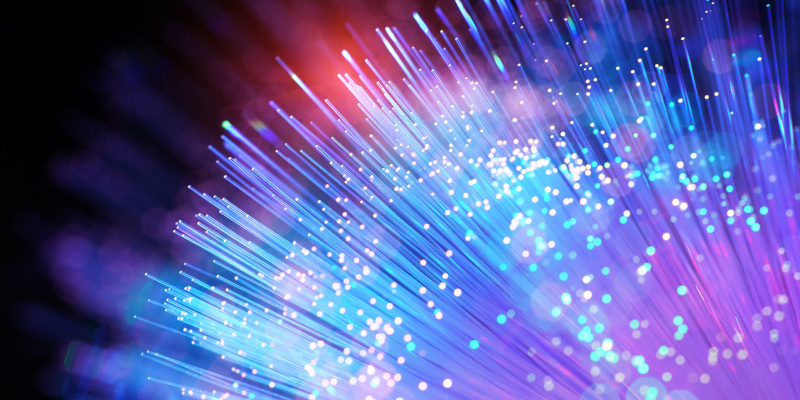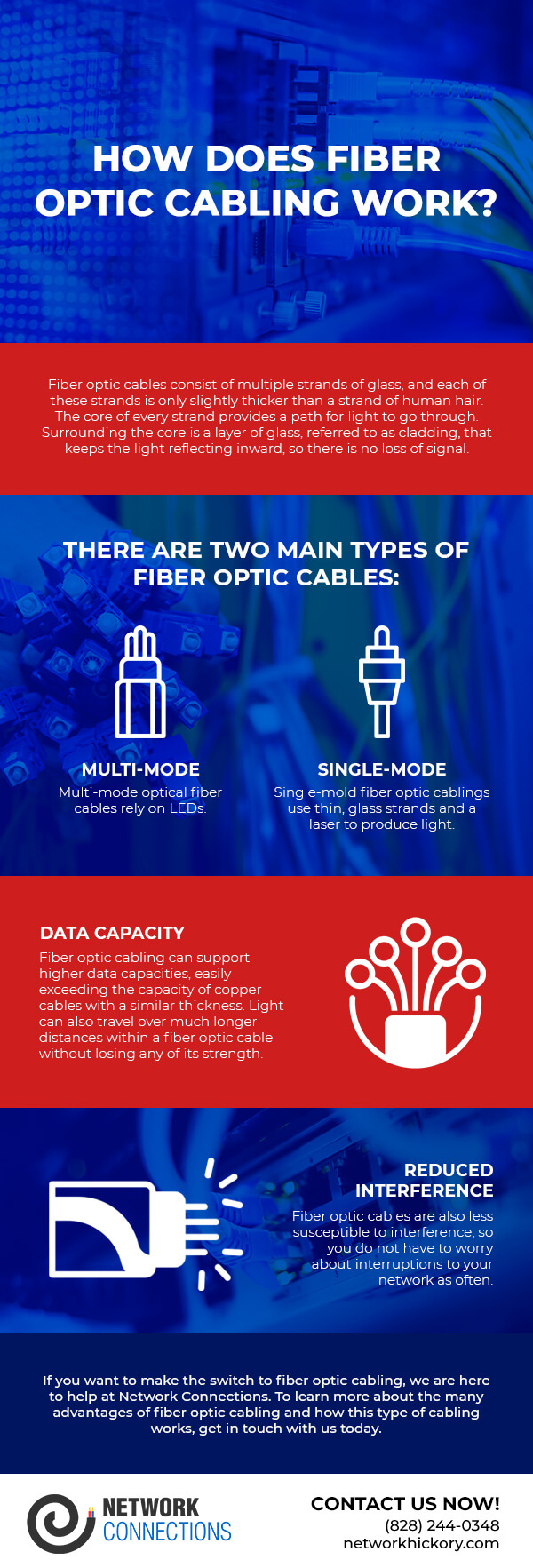Fiber optic cables consist of multiple strands of glass, and each of these strands is only slightly thicker than a strand of human hair. The core of every strand provides a path for light to go through. Surrounding the core is a layer of glass, referred to as cladding, that keeps the light reflecting inward, so there is no loss of signal. This cladding also helps light effectively travel through any bends in the cabling.


There are two main types of fiber optic cables: multi-mode and single mode. Multi-mode optical fiber cables rely on LEDs, while single-mold fiber optic cablings use thin, glass strands and a laser to produce light.
Fiber optic cabling also provides many advantages over long-distance copper cabling. For starters, if you have fiber optic cabling, it can support higher data capacities, easily exceeding the capacity of copper cables with a similar thickness. Light can also travel over much longer distances within a fiber optic cable without losing any of its strength. Because of this, you won’t need to rely on signal boosters within your network.


Fiber optic cables are also less susceptible to interference, so you do not have to worry about interruptions to your network as often.
If you want to make the switch to fiber optic cabling, we are here to help at Network Connections. To learn more about the many advantages of fiber optic cabling and how this type of cabling works, get in touch with us today.

